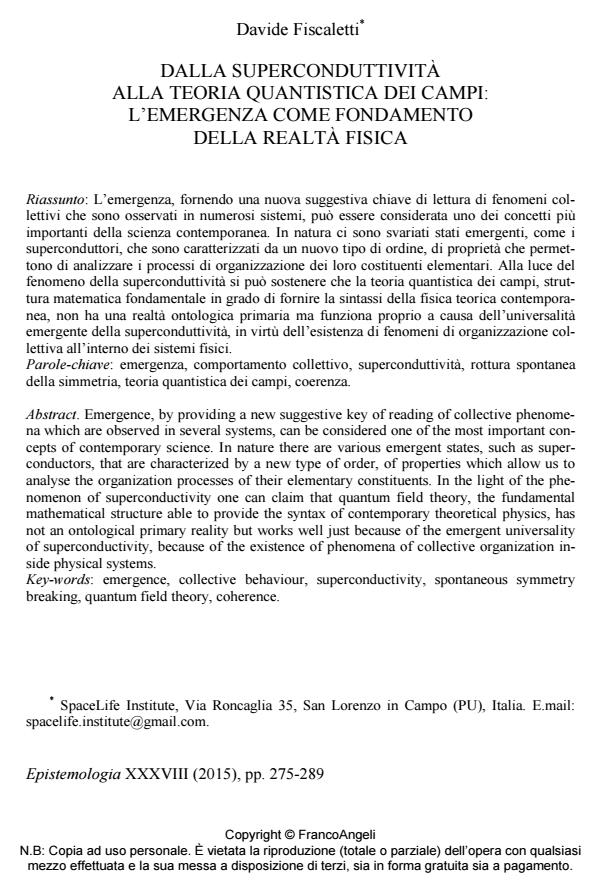Dalla superconduttività alla teoria quantistica dei campi: l’emergenza come fondamento della realtà fisica
Journal title EPISTEMOLOGIA
Author/s Davide Fiscaletti
Publishing Year 2016 Issue 2015/2
Language Italian Pages 15 P. 275-289 File size 181 KB
DOI 10.3280/EPIS2015-002007
DOI is like a bar code for intellectual property: to have more infomation
click here
Below, you can see the article first page
If you want to buy this article in PDF format, you can do it, following the instructions to buy download credits

FrancoAngeli is member of Publishers International Linking Association, Inc (PILA), a not-for-profit association which run the CrossRef service enabling links to and from online scholarly content.
Emergence, by providing a new suggestive key of reading of collective phenomena which are observed in several systems, can be considered one of the most important concepts of contemporary science. In nature there are various emergent states, such as superconductors, that are characterized by a new type of order, of properties which allow us to analyse the organization processes of their elementary constituents. In the light of the phenomenon of superconductivity one can claim that quantum field theory, the fundamental mathematical structure able to provide the syntax of contemporary theoretical physics, has not an ontological primary reality but works well just because of the emergent universality of superconductivity, because of the existence of phenomena of collective organization inside physical systems.
Keywords: Emergence, collective behaviour, superconductivity, spontaneous symmetry breaking, quantum field theory, coherence
Davide Fiscaletti, Dalla superconduttività alla teoria quantistica dei campi: l’emergenza come fondamento della realtà fisica in "EPISTEMOLOGIA" 2/2015, pp 275-289, DOI: 10.3280/EPIS2015-002007